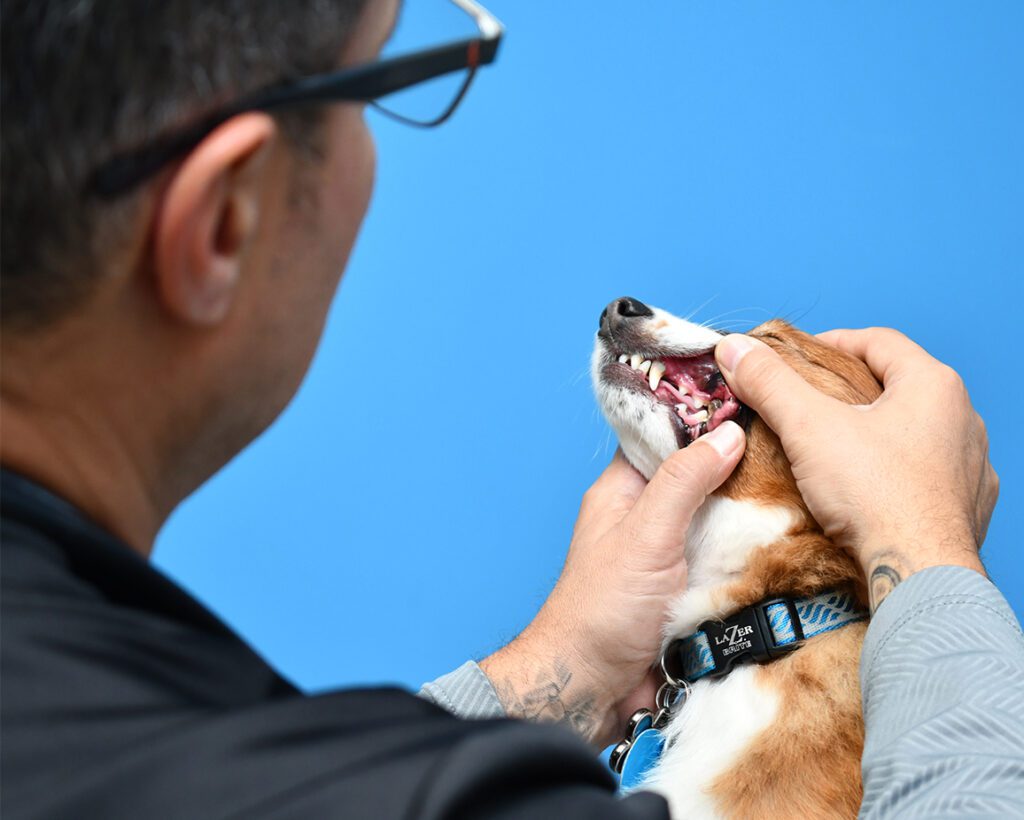
FAQS About Dental Care for Dogs and Cats
Dogs and cats can both suffer from dental diseases, but there are some differences in the types and prevalence of these conditions between the two species. Regular veterinary check-ups and tailored dental care routines are crucial for preventing and managing these conditions in both pets.
Common Dental Diseases in Both Dogs and Cats
- Periodontal Disease: This is the most common dental disease in both dogs and cats. It involves inflammation and infection of the gums and the structures supporting the teeth, caused by plaque and tartar buildup. If left untreated, it can lead to tooth loss and systemic health problems.
- Gingivitis: This condition, characterized by inflamed and swollen gums, affects both dogs and cats. It is an early stage of periodontal disease and can progress if not managed with proper oral care.
- Tartar Buildup: Both species are prone to tartar (hardened plaque) accumulating on their teeth, which can lead to gum irritation, bad breath, and further dental issues.
Differences in Dental Diseases Between Dogs and Cats
- Tooth Resorption (More Common in Cats): Cats are particularly susceptible to tooth resorption, where the tooth structure breaks down and is absorbed by the body. This can cause significant pain and tooth loss. While dogs can experience similar conditions, it is much rarer.
- Fractured Teeth (More Common in Dogs): Dogs are more likely to suffer from fractured teeth due to chewing on hard objects, such as bones or toys. These fractures can expose the tooth’s pulp, leading to pain and infection.
- Stomatitis (More Common in Cats): Cats are more prone to stomatitis, a painful inflammation of the mouth lining. This condition is often immune-mediated and can cause severe discomfort, leading to a reluctance to eat.
- Malocclusions and Bite Issues (More Common in Dogs): Due to the wide variety of dog breeds and skull shapes, dogs are more likely to have bite abnormalities and malocclusions (misalignment of teeth). This can lead to uneven wear on teeth, gum trauma, and other dental problems
Dental Care Facts
Dog Facts
- Importance of Dental Health: Dental health is crucial for dogs as poor oral hygiene can lead to gum disease, tooth loss, and even affect vital organs like the heart and kidneys.
- Common Dental Problems: The most common dental issues in dogs include periodontal disease, fractured teeth, and tartar buildup, which can cause pain and difficulty eating.
- Signs of Dental Issues: Bad breath, red or swollen gums, loose teeth, and a reluctance to chew are common signs that a dog may have dental problems.
- Dental Cleaning: Regular professional dental cleanings by one of our veterinarians are essential. These cleanings remove plaque and tartar that cannot be eliminated by brushing alone.
- Home Dental Care: Brushing your dog’s teeth daily or using dental chews and toys can help maintain oral hygiene and prevent dental diseases.
- Diet and Dental Health: Specially formulated dental diets can help reduce plaque and tartar buildup. Crunchy kibble and treats designed for oral health are beneficial for maintaining cleaner teeth.
Cat Facts
- Importance of Dental Health: Dental care is equally important for cats, as dental disease can lead to severe pain, difficulty eating, and other health issues, including kidney and heart problems.
- Common Dental Problems: Cats commonly suffer from periodontal disease, tooth resorption, and gingivitis, which can all contribute to significant discomfort and health issues.
- Signs of Dental Issues: Symptoms such as drooling, pawing at the mouth, bad breath, and a decrease in appetite could indicate dental problems in cats.
- Dental Cleaning: Regular professional cleanings by one of our veterinarians are recommended to maintain a cat’s dental health. These cleanings help remove harmful plaque and tartar.
- Home Dental Care: Yes! Cats benefit from at home teeth brushing too! While brushing a cat’s teeth can be challenging, it is one of the best ways to maintain dental health. Dental treats, toys, and gels can also aid in reducing plaque buildup.
- Diet and Dental Health: Cats can benefit from dental-specific diets that promote oral health. These diets are typically designed to reduce tartar buildup and keep teeth clean.

